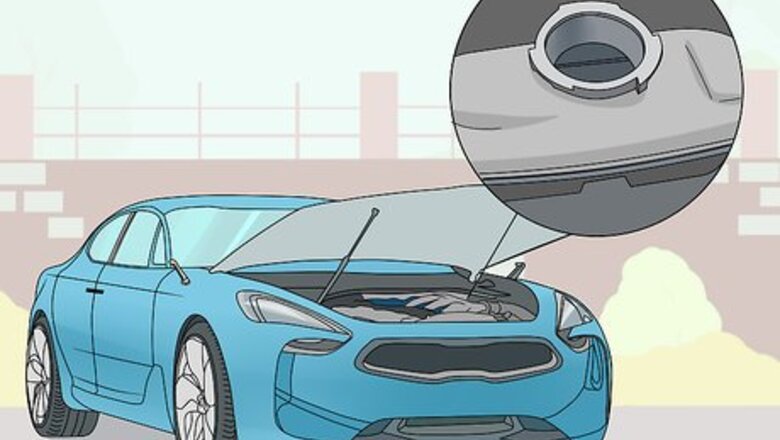
views
Finding the Leak
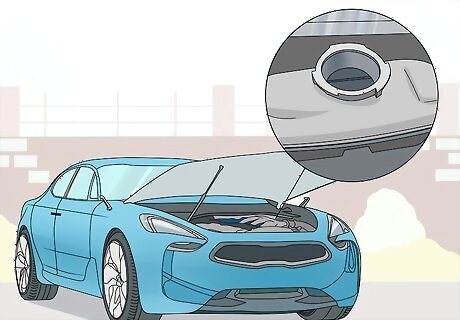
Open the hood and check the brake fluid reservoir. This reservoir is located on the driver’s side toward the rear of the engine compartment. If fluid is low, then you may have a leak.
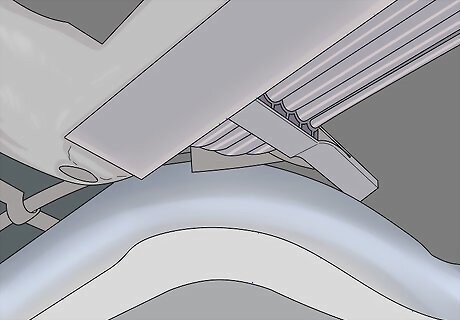
Verify the leak by checking beneath the car for the presence of brake fluid. The location of the brake fluid will also help you to locate the general placement of the leak.
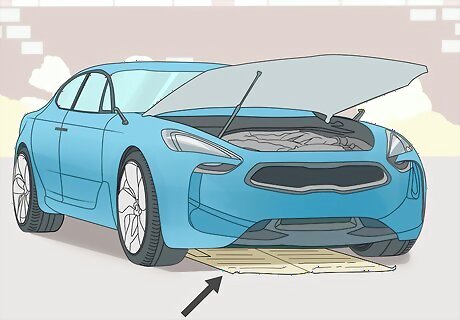
Place newspapers on the ground beneath the general location of the leak.

Pump the brake pedal to force fluid out through the leak. Make sure that your car is NOT turned on for this process. Turning on the car would cause the brake fluid to squirt out very quickly and would make the leak hard to control, depending on its severity.
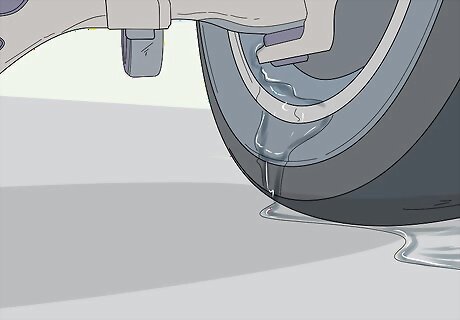
Crawl underneath the car and look for the spot where fluid is dripping from the brakes. If the leak is coming from within a wheel, then you may have to remove the wheel to check for leaks in the lines and calipers. It the car has brake drums it may have a leak in the wheel cylinder. You will have to remove the brake drum to check it.
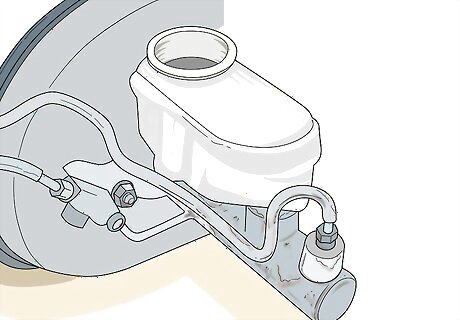
Check the master cylinder for leaks. The master cylinder’s placement varies from car to car and will be given in your owner’s manual. If you no longer have a copy, then check online to find the original manual.

Verify that the master cylinder lid is tightly closed. Sometimes, fluid can leak from a lid that has not been properly fastened.
Rebuilding Brake Calipers
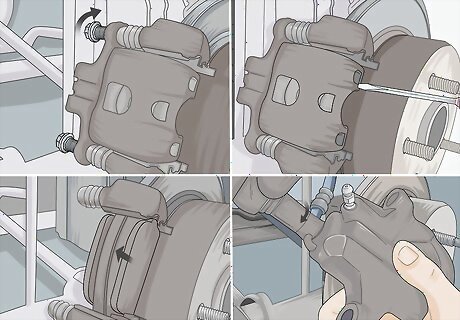
Remove the old caliper. Purchase a caliper rebuild kit from an automotive store or dealership. Remove the brake bleeder bolt using a flare-nut wrench. If needed, utilize gentle tapping and penetrating oil to loosen the part without breaking it. Disconnect both the steel and rubber brake lines using a flare-nut wrench. Replace these lines if they are cracking or worn before putting the calipers back onto the car. Strip the calipers of pads, shims, springs and sliders or pins. Remove the outer dust seal. Place a piece of wood that is slightly thicker than both brake pads stacked together in the caliper behind the piston. Release low-pressure compressed air into the inlet port. This should cause the piston to pop out.

Replace the piston. Lubricate the new piston that came in the rebuild kit with brake fluid. Insert the new piston into the caliper using moderate finger pressure.
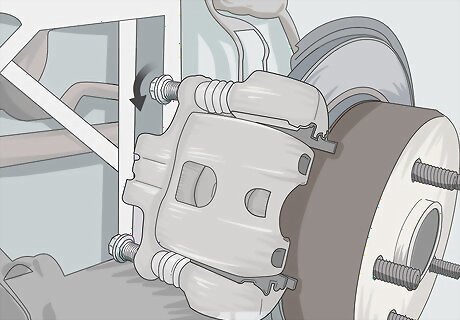
Replace the caliper. Replace the outer dust seal. Replace the pads, shims, springs, and sliders or pins. Use the new parts that came in your repair kit, and discard your old parts. Reconnect the steel and rubber brake lines. Replace the brake bleeder bolt. Test the brakes to make sure they are no longer leaking.
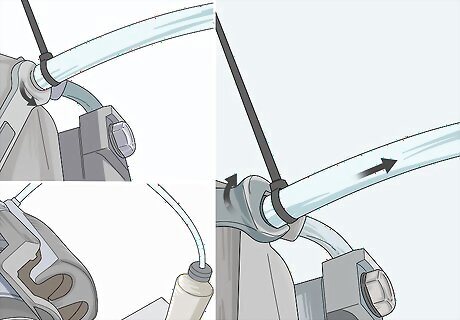
Bleed all air from the brake system.
Replacing a Wheel Cylinder
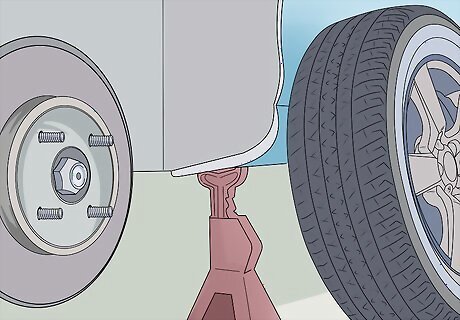
Remove the wheel. Remove the hubcap and the tire. Raise the car using a jack so that the wheel is off of the ground. Remove the lug nuts and the wheel. Spray the steel brake line fitting with penetrating oil to loosen any existing rust.
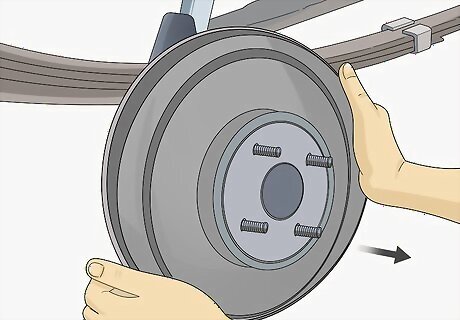
Remove the brake drum. Remove the rubber plug behind the backing plate. Loosen the self-adjuster (star wheel) to lower the brake shoes. If you turn the self-adjuster in the wrong direction, then the drum will get tighter and will not turn. Use a small flat head screwdriver to release the adjuster arm, if needed. You may need to use a hammer to hit the middle of the drum to loosen any rust that surrounds the center piece. Remove the drum. Place a drip pan beneath the brake shoes. If the brake shoes are covered in fluid, you will need to replace them as well. Spray the area with brake cleaner to eliminate dirt and fluid.
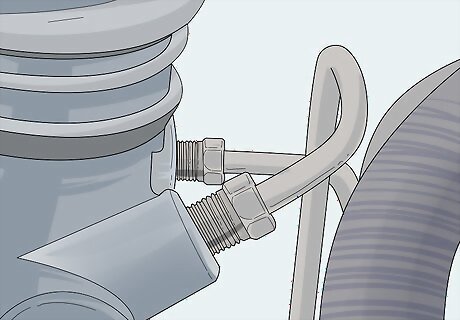
Loosen the steel brake line. Prepare a vacuum hose to prevent brake fluid from leaking out of the steel brake line. Place a screw or bolt in one end. Locate the steel brake line on the plate where it screws into the wheel cylinder and use a line wrench to loosen the brake line fitting. Remove the fitting. Place the vacuum hose over the line to prevent leakage.
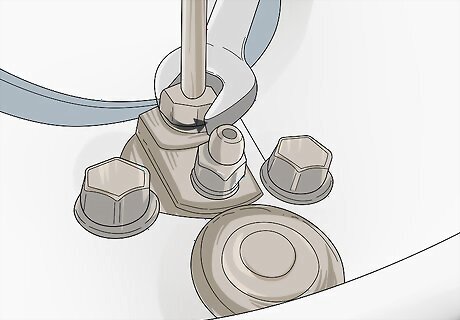
Replace the wheel cylinder. Locate the two retaining bolts on the backing plate that hold the wheel cylinder in place. Use a socket wrench to loosen the bolts. Remove the old wheel cylinder. Thread the steel brake line fitting into the new cylinder. Screw it in as far as you can by hand. Insert the bolts back into the backing plate and screw them in to secure the new cylinder.
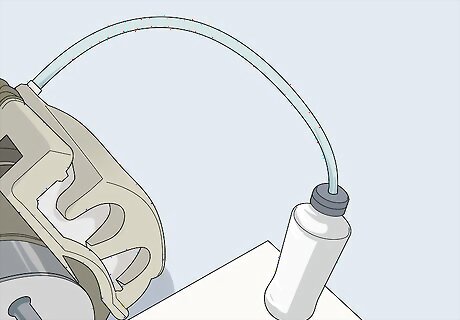
Bleed all air from the brake system. See instructions in method six.
Replacing Steel Brake Lines and Hoses
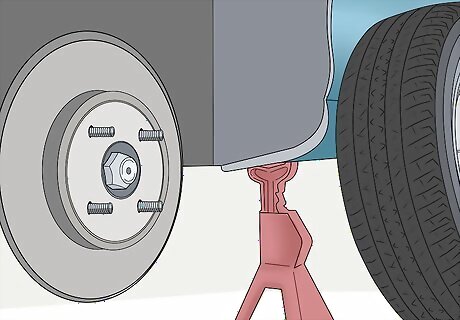
Remove the tire that is over the leaking brake line.
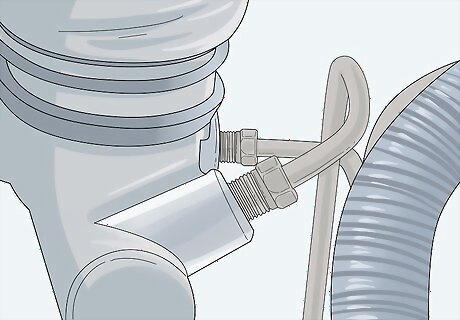
Unscrew the brake line from the fitting that is closest to the master cylinder. Use the proper flare nut wrench.
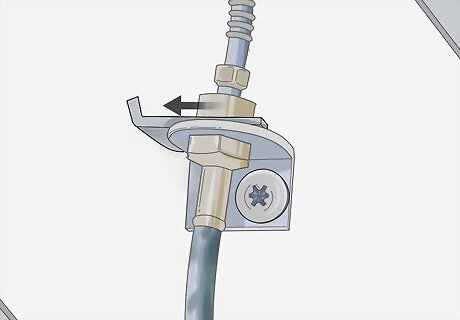
Remove all mounting bracket clips that hold the brake line in place.
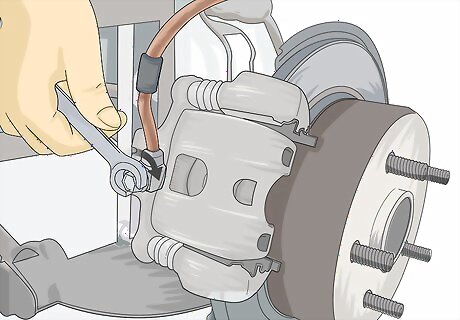
Disconnect the brake line from the brake caliper using a line wrench.
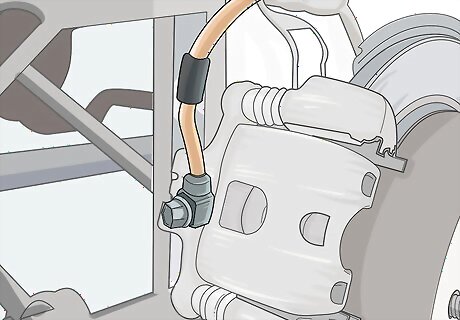
Loosely attach the new brake line to the caliper. The new brake line should be the same length as the old line.
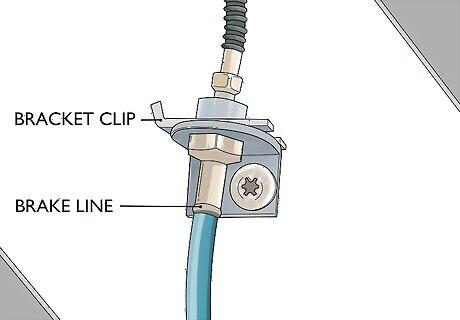
Reinstall bracket clips with the new line.
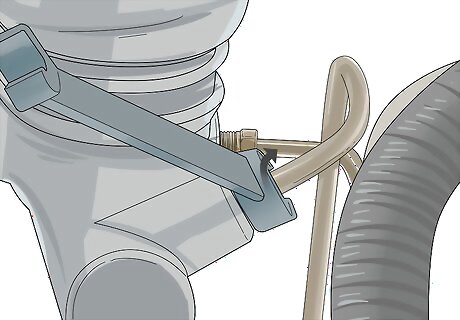
Attach the brake line to the fitting closest to the master cylinder using a line wrench.
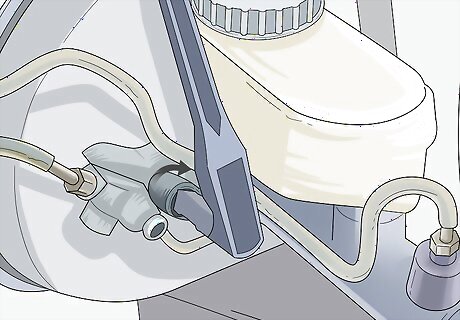
Tighten all connections.

Bleed all air from the brake system, as described in method six.
Replacing the Master Cylinder
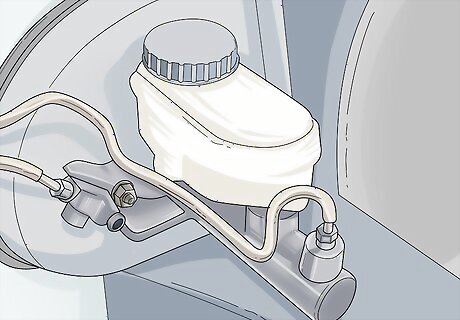
Open the hood and locate the master cylinder.
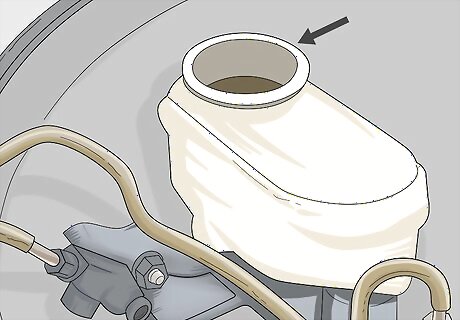
Remove the brake fluid reservoir cap.
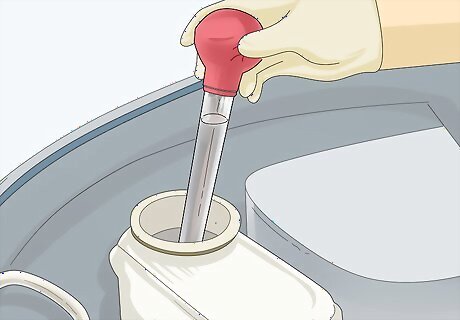
Withdraw brake fluid from the master cylinder using a turkey baster. Place discarded brake fluid into a plastic container.
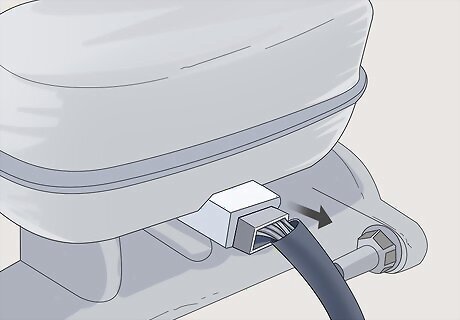
Disconnect all electrical connectors from the master cylinder.

Disconnect the brake lines using a line wrench by turning the line wrench in a counterclockwise motion.
Remove the master cylinder mounting bolts with a socket wrench.
Remove the old master cylinder.
Install the new master cylinder by securing mounting bolts.
Connect brake lines to the new master cylinder with a line wrench.
Connect electrical connectors to the new master cylinder.
Bleed all air from the brake system.
Bleeding Air From the Brake System
Ask your assistant to sit in the driver’s seat.
Remove the brake fluid reservoir cap on top of the master cylinder.
Draw all of the brake fluid from the master cylinder using a turkey baster. Place the used brake fluid in plastic bottles. Clean out any sediment with a clean, lint-free rag.
Refill the brake fluid reservoir with new fluid. Check the underside of the reservoir cap or your owner’s manual to find out which brake fluid is appropriate for your car.
Loosen the brake fluid bleeder screw located on the caliper or the wheel cylinder at the right rear of the car. You will have to bleed each brake one at a time or you risk drawing air into the system. Start with the right, rear of the car.
Attach a vinyl hose to the bleeder screw.
Place the opposite end of the vinyl hose into a clear plastic bottle.
Ask your assistant to press the brake pedal to the lowest point of its normal travel (you may need a block under the brake pedal to avoid going past this).
Tighten the front right brake fluid bleeder screw after all of the air bubbles are released.
Ask the assistant to pump the brake pedal until the pedal gets hard and builds up pressure. This will draw fluid into the body of the master cylinder. Fluid should squirt into the bottle each time your assistant pumps the brakes. Do this until new, fresh brake fluid starts coming out. Keep topping off the master cylinder with more fluid. It should never be more than half empty.
Ask your assistant to press the brake pedal again. Tighten the brake fluid bleeder screw and remove the hose. Repeat the process until all four wheels have been bled. Again, you must bleed each brake one at a time.
Top off the master cylinder with brake fluid.
Test the brakes to make sure that they are functioning normally.












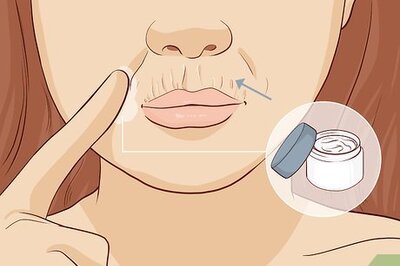


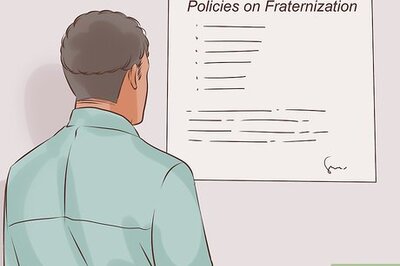
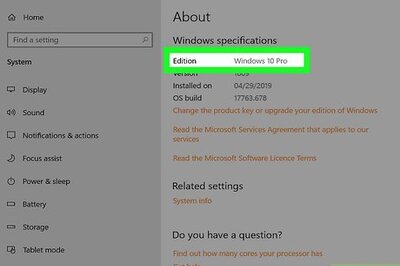
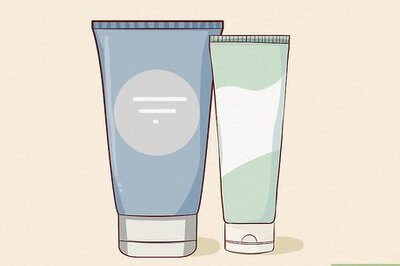
Comments
0 comment